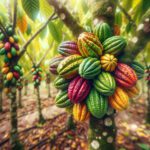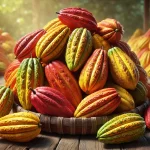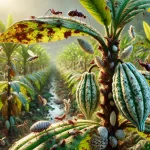Cacao, the essential raw material for the production of prized chocolate, represents a crop of significant economic and cultural importance in numerous regions of Latin America, Africa, and Asia. For producers aspiring to achieve optimal levels of quality and yield in their harvests, a comprehensive understanding of the intricate phenological stages of cacao stands as a fundamental pillar. This article delves into each phase of the cacao life cycle, offering detailed and relevant technical information for the implementation of optimized cultivation practices.
Breaking Down the Phenological Stages of Cacao for Optimal Production
Stage 1: Germination and Initial Establishment – The Awakening of the Seed
The cacao life cycle begins with the germination of fresh and viable seeds. This process requires a substrate with constant moisture, avoiding waterlogging, and meticulous protection against extreme temperature fluctuations that could compromise seed viability.
Once the seedlings emerge from the soil, they enter a delicate development phase that demands special care. The provision of partial shade, which simulates the understory conditions where cacao thrives naturally, and protection against the erosive action of strong winds are crucial for their survival and initial growth. Simultaneously, a soil rich in essential nutrients, with good drainage and a structure that favors root development, lays the foundation for vigorous and healthy growth in later stages.
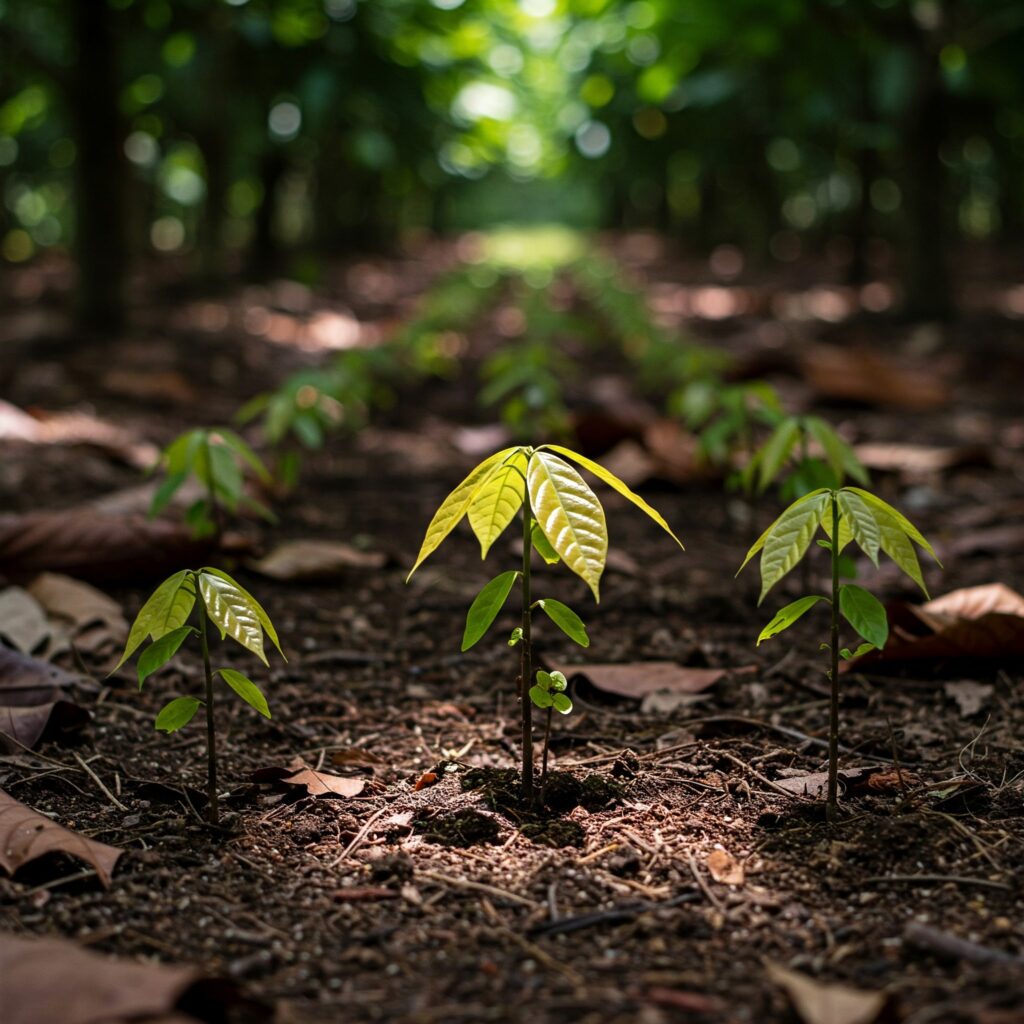
Stage 2: Vegetative Development – Building the Productive Structure
During the vegetative development phase, the cacao tree focuses on establishing a robust structure of leaves, stems, and branches. The provision of adequate shade, especially during hours of high solar intensity, remains a critical factor in preventing water and light stress. Balanced nutrition, including essential macro and micronutrients, is fundamental to sustain this active growth.
Strategic pruning and canopy management emerge as crucial practices at this stage. Formation pruning helps define the tree’s architecture, promoting an open structure that facilitates light and air penetration, essential elements for photosynthesis and tree health. Canopy management, through maintenance pruning, seeks to eliminate unproductive shoots, suckers, and diseased branches, optimizing resource distribution and preventing the proliferation of diseases.

Stage 3: Flowering and Pollination – The Beginning of the Promise of Fruits
Flowering in cacao is a continuous process that can occur throughout the year, although it usually presents seasonal peaks influenced by climatic conditions, especially the transition periods between dry and rainy seasons, and by the nutritional status of the tree. The small and delicate flowers sprout directly from the trunk and older branches, a phenomenon known as cauliflory.
Pollination in cacao is carried out mainly by small dipteran insects, particularly midges of the genus Forcipomyia. Pollination efficiency is a limiting factor in cacao production and depends largely on the presence of an active and diverse population of these pollinators in the cacao orchard environment. The conservation of a healthy natural environment around the plantations, including native vegetation and avoiding the indiscriminate use of pesticides, is fundamental to maintain and promote pollinator populations.
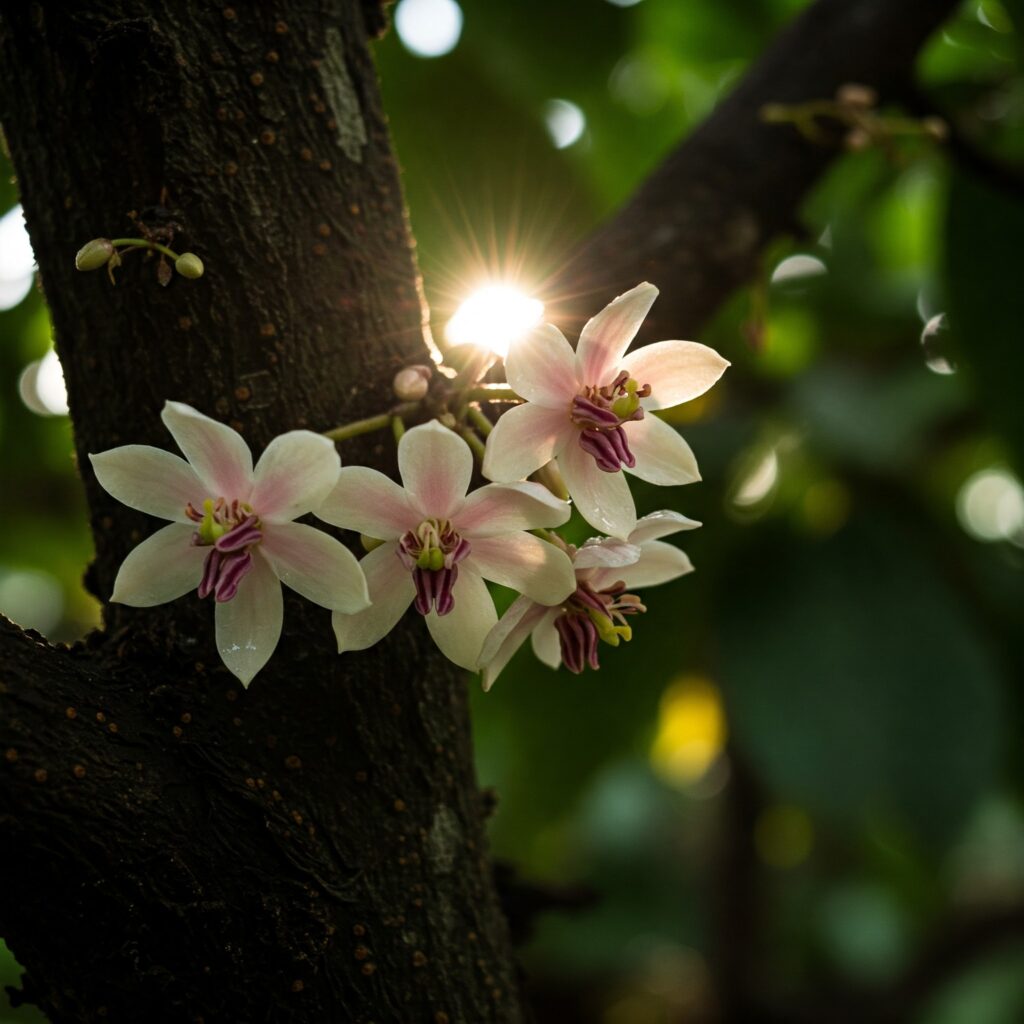
Stage 4: Fruit (Pod) Development – Nutrition and Protection for Yield
After successful pollination, the development of the pods, the fruits of the cacao tree, begins. This fruiting process requires a constant supply of nutrients and water, as well as constant monitoring for the timely detection and control of pests and diseases that can affect the development and quality of the fruits.
The maturation of cacao pods is a slow process that can extend several months, depending on the variety and environmental conditions. During this period, it is crucial to maintain an adequate irrigation regime, especially in times of drought, and to protect the fruits from adverse weather conditions such as torrential rains or hail, which can cause physical damage and favor the appearance of diseases. Nutrition plays a fundamental role in the size, weight, and internal composition of the cacao beans within the pod.
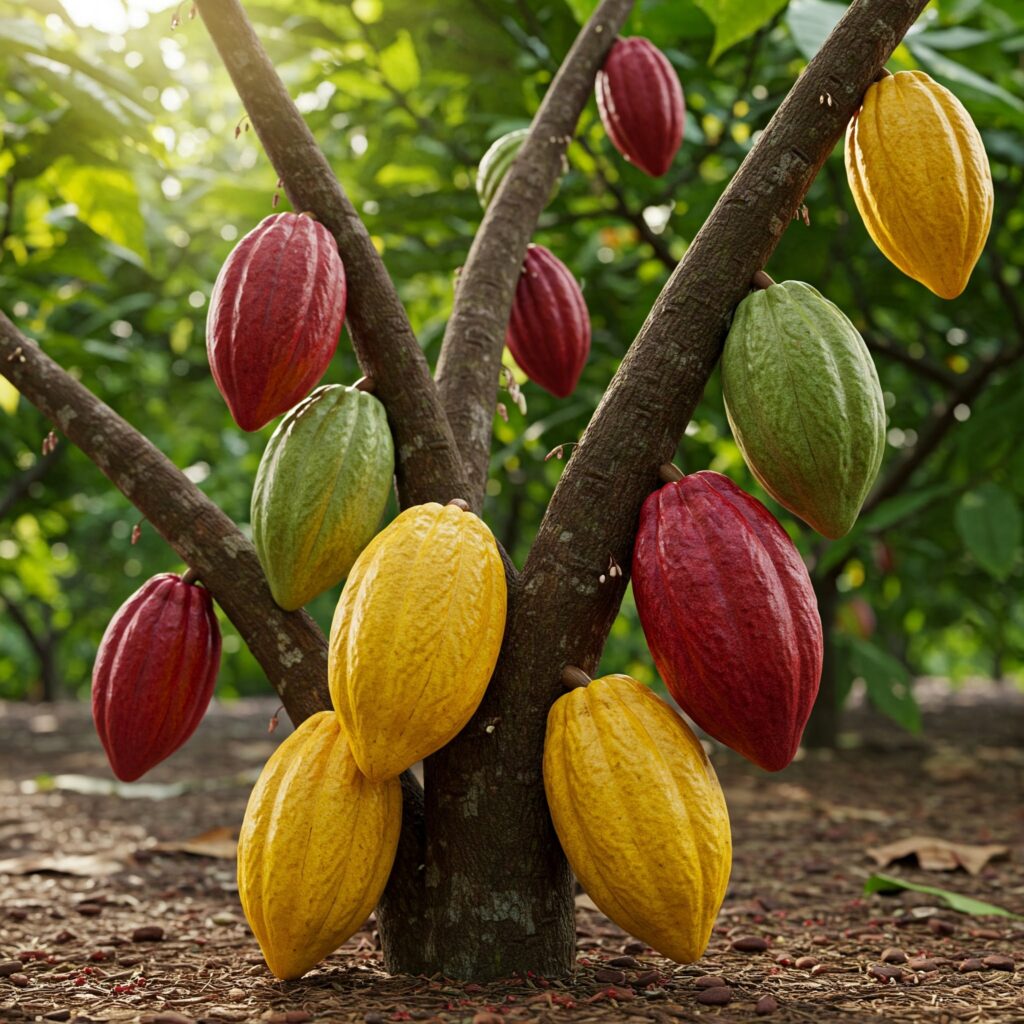
Stage 5: Harvest and Post-Harvest Processing – The Culmination of Quality
Cacao harvesting is generally done manually, requiring the skill of the harvesters to carefully identify and select the pods that have reached their optimal point of maturity. Timely harvesting is a determining factor in the final quality of the cacao beans. Overripe or immature pods can negatively affect the flavor and characteristics of the chocolate.
Post-harvest processing, which includes opening the pods, extracting the beans, fermentation, and drying, is a critical stage that significantly influences the development of the precursors of chocolate flavor. Fermentation, a complex biochemical process, must be carefully controlled in terms of time, temperature, and aeration to ensure the correct transformation of the bean components. Drying reduces the moisture content of the beans, preventing mold growth and preparing them for storage and commercialization. Each of these post-harvest steps must be executed with precision to guarantee the superior quality of the final product.
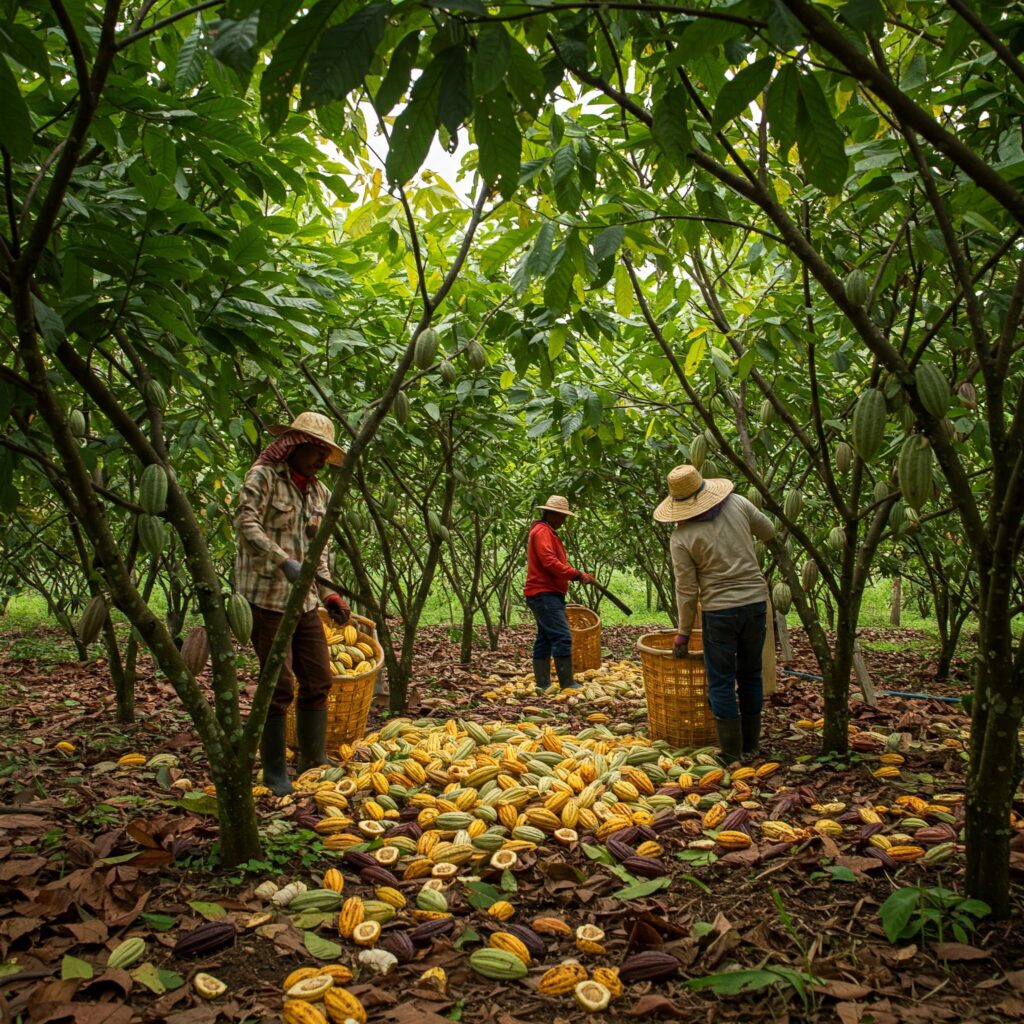
 AgronoBlog – Agriculture Blog
AgronoBlog – Agriculture Blog 